Gucci
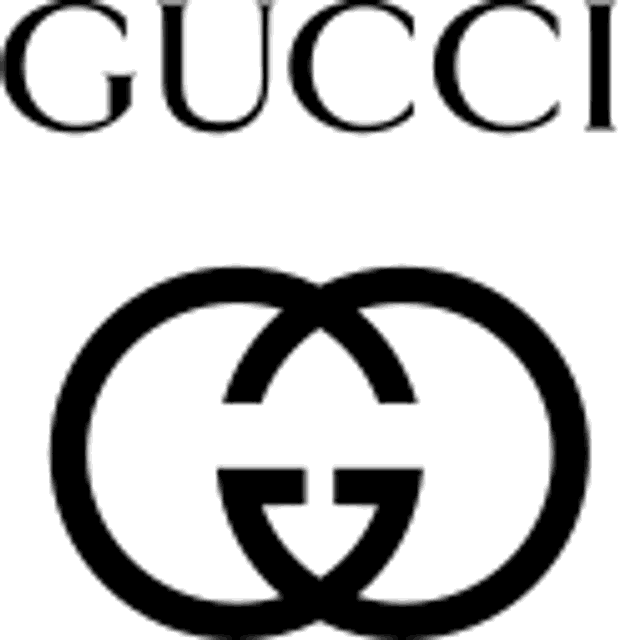
Gucci

Type | Subsidiary |
|---|---|
| Industry | Fashion |
| Founded | 1921 (1921) |
| Founder | Guccio Gucci |
| Headquarters | Florence, Tuscany ,Italy |
Number of locations | 550+ (2014) |
Key people | Marco Bizzarri (CEO) Alessandro Michele (Creative Director) |
| Revenue | US$7.1 billion (2017)[1] |
| Parent | Kering |
| Website | www.gucci.com [78] |
Gucci (/ˈɡuːtʃi/, GOO-chee; Italian pronunciation: [ˈɡuttʃi]) is an Italian luxury brand of fashion and leather goods.[2][3][4] Gucci was founded by Guccio Gucci in Florence, Tuscany, in 1921.[5] Gucci generated about €4.2 billion in revenue worldwide in 2008 according to BusinessWeek and climbed to 41st position in the magazine's annual 2009 "Top Global 100 Brands" chart created by Interbrand;[6] it retained that rank in Interbrand's 2014 index.[7] Gucci is also the highest-selling Italian brand.[6]
Gucci operates about 278 directly operated stores worldwide as of September 2009, and it wholesales its products through franchisees and upscale department stores.[8] In the year 2013, the brand was valued at US$12.1 billion, with sales of US$4.7 billion. In the Forbes World's Most Valuable Brands list, Gucci is ranked the 38th most valuable brand, with a brand value of $12.4 billion as of May 2015.[9] As of January 2015, the creative director is Alessandro Michele.
Type | Subsidiary |
|---|---|
| Industry | Fashion |
| Founded | 1921 (1921) |
| Founder | Guccio Gucci |
| Headquarters | Florence, Tuscany ,Italy |
Number of locations | 550+ (2014) |
Key people | Marco Bizzarri (CEO) Alessandro Michele (Creative Director) |
| Revenue | US$7.1 billion (2017)[1] |
| Parent | Kering |
| Website | www.gucci.com [78] |
History
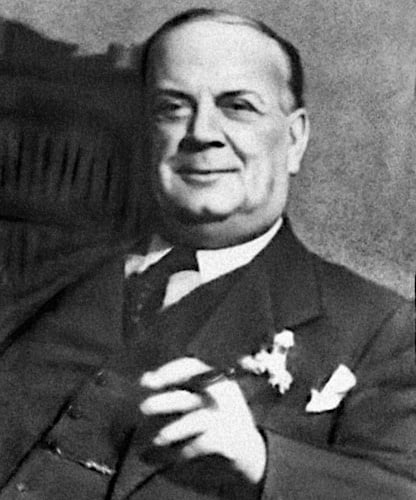
The founder Guccio Gucci
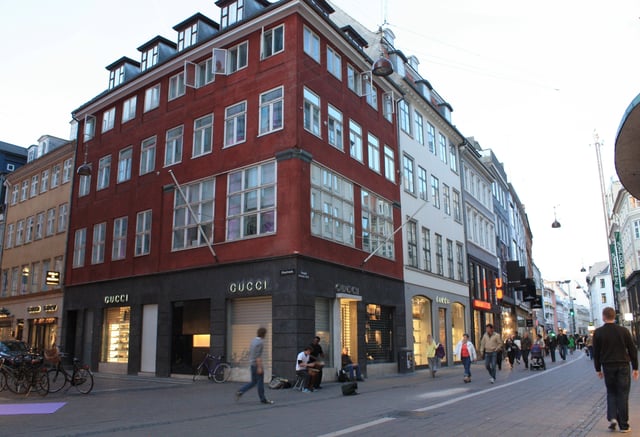
Gucci Shop on Strøget in Copenhagen, Denmark
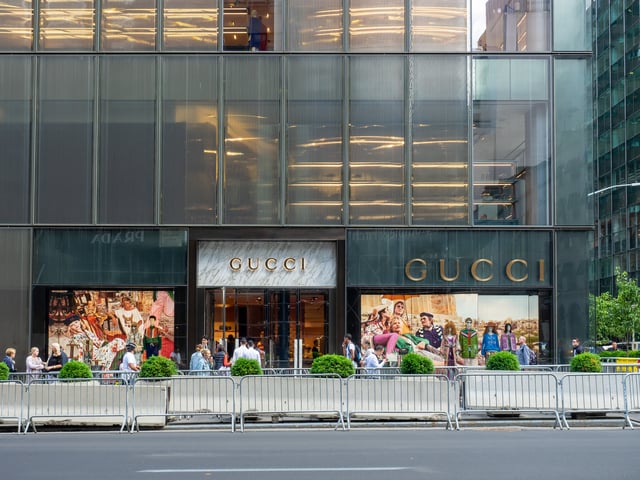
Gucci Store on Fifth Avenue in New York City
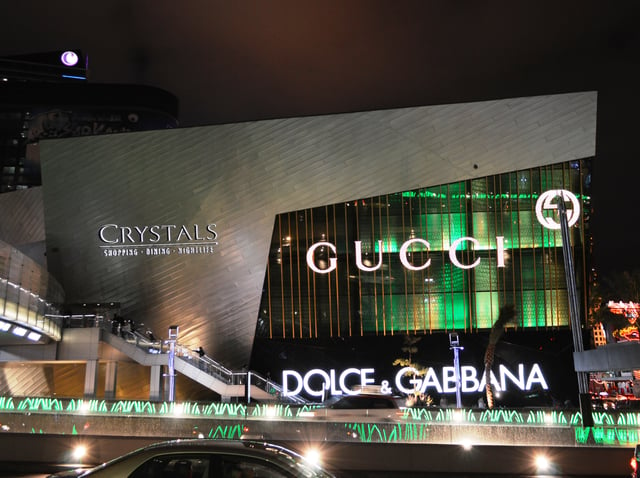
Gucci Store on the Las Vegas Strip in Las Vegas
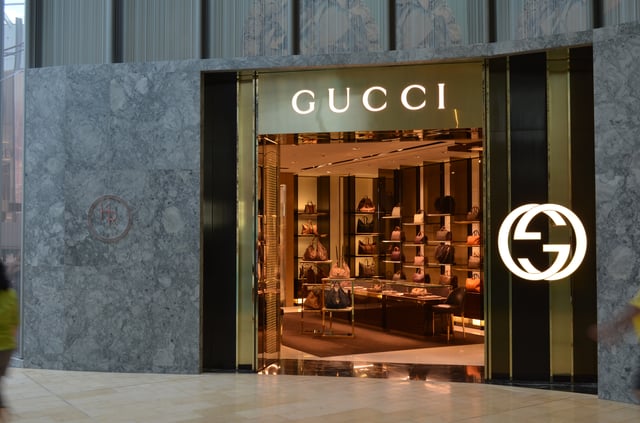
Gucci Store in Toronto, Canada
At the beginning of the 19th century, the Gucci[10][11][12][13] company became one of the world’s most successful manufacturers of high-end leather goods, clothing, and other fashion products. As an immigrant hotel worker in Paris and later London, young Guccio Gucci (1881–1953) was impressed with the luxurious luggage he saw urbane guests bring with them at the Savoy Hotel. Before leaving, he visited the manufacturer, H.J. Cave & Sons. Upon returning to his birthplace of Florence, a city distinguished for high-quality materials and skilled artisans, he established a shop in 1920 that sold fine leather goods with classic styling. Although Gucci organized his workrooms for industrial methods of production, he maintained traditional aspects of fabrication. Initially, Gucci employed skilled workers in basic Florentine leather crafts, attentive to finishing. With expansion, machine stitching was a production method that supported construction.
Together with three of his sons, Aldo Gucci (1905–1990), Vasco Gucci (1907–1975), and Rodolfo Gucci (1912–1983), Gucci expanded the company to include stores in Milan and Rome as well as additional shops in Florence. Gucci's stores featured such finely crafted leather accessories as handbags, shoes, and his iconic ornamented loafer as well as silks and knitwear in a signature pattern.
The company made handbags of cotton canvas rather than leather during World War II as a result of material shortages. The canvas, however, was distinguished by a signature double-G symbol combined with prominent red and green bands. After the war, the Gucci crest, which showed a shield and armored knight surrounded by a ribbon inscribed with the family name, became synonymous with the city of Florence.
Aldo and Rodolfo Gucci further expanded the company's horizons in 1953 by establishing offices in New York City. Film stars and jet-set travelers to Italy during the 1950s and 1960s brought their glamour to Florence, turning Gucci's merchandise into international status symbols. Movie stars posed in Gucci's clothing, accessories, and footwear for lifestyle magazines around the world, contributing to the company’s growing reputation.
Gucci's distinctive lines made its products among the most frequently copied in the world in the early 2000s. Pigskin, calf, and imported exotic animal skins were subjected to various methods of fabrication. Waterproof canvas and satin were used for evening bags. Bamboo was first used to make handbag handles by a process of heating and molding in 1947, and purses made with a shoulder strap and snaffle-bit decoration were introduced in 1960. In 1964 Gucci’s lush butterfly pattern was custom-created for silk foulards, followed by equally luxuriant floral patterns. The original Gucci loafer was updated by a distinctive snaffle-bit ornament in 1966, while the "Rolls-Royce" luggage set was introduced in 1970. Watches, jewelry, ties, and eyewear were then added to the company's product lines. A particularly iconic touch, introduced in 1964, was the use of the double-G logo for belt buckles and other accessory decorations.[14]
The company prospered through the 1970s, but the 1980s were marked by internal family disputes that brought Gucci to the brink of disaster. Rodolfo’s son Maurizio Gucci took over the company’s direction after his father’s death in 1983 and dismissed his uncle Aldo—who eventually served a prison term for tax evasion. Maurizio proved to be an unsuccessful president; he was compelled to sell the family-owned company to Investcorp,[15] a Bahrain-based company, in 1988. Maurizio disposed of his remaining stock in 1993. Maurizio was murdered by a hitman in Milan in 1995, and his former wife, Patrizia Reggiani, was convicted of hiring his killer. Meanwhile, the new investors promoted the American-educated Domenico De Sole from the position of family attorney to president of Gucci America in 1994 and chief executive in 1995.
The company had previously brought in Dawn Mello in 1989 as editor and ready-to-wear designer in order to reestablish its reputation. Well aware of Gucci’s tarnished image and the value of its name brand, Mello hired Tom Ford in 1990 to design a ready-to-wear line. He was promoted to the position of creative director in 1994. Before Mello returned to her post as president of the American retailer Bergdorf Goodman, she initiated the return of Gucci’s headquarters from the business center of Milan to Florence, where its craft traditions were rooted. There she and Ford reduced the number of Gucci products from 20,000 to 5,000.
Steinunn Sigurdardóttir was the Director and Senior Designer for Gucci from 1995 to 2000.
There were seventy-six Gucci stores around the world in 1997, along with numerous licensing agreements. Ford was instrumental in the process of decision-making with De Sole when the Gucci Group acquired Yves Saint Laurent Rive Gauche, Bottega Veneta, Boucheron, Sergio Rossi, and, in part-ownership with Stella McCartney, Alexander McQueen and Balenciaga. By 2001 Ford and De Sole shared the responsibility for major business decisions, while Ford concurrently directed design at Yves Saint Laurent as well as at Gucci.
The French conglomerate Pinault-Printemps-Redoute, however, gained ownership of 60 percent of the Gucci Group’s stock in 2003. Women’s Wear Daily then announced the departure of both Domenico De Sole and Tom Ford from the Gucci Group when their contracts expired in April 2004. The last spring collection under the direction of Ford and De Sole was a critical and commercial success. Amid widespread speculation in the fashion press about Ford’s heir, the company announced in March 2004 that he would be replaced by a team of younger designers promoted from the ranks of the company’s staff.[16]
In 2005, Frida Giannini was appointed as the creative director for women’s ready-to-wear and accessories, previously joining Gucci in 2002. In 2006, she also became the creative director for men's ready-to-wear and the entire Gucci label.[17]
As announced in December 12, 2014, Creative Director Frida Giannini and CEO Patrizio di Marco were to step down from Gucci. Marco Bizzarri was appointed CEO of the brand.[18]
In 2017, Bizzarri said, "Being socially responsible is one of Gucci's core values, and we will continue to strive to do better for the environment and animals," and therefore fur would be banned from Gucci collections as of 2018.[19] In August 2018, Gucci launched online operations in New Zealand.[20]
After being appointed Gucci's creative director in 2015, Michele reintroduced the company's double-G Marmont logo.[21]
Corporate
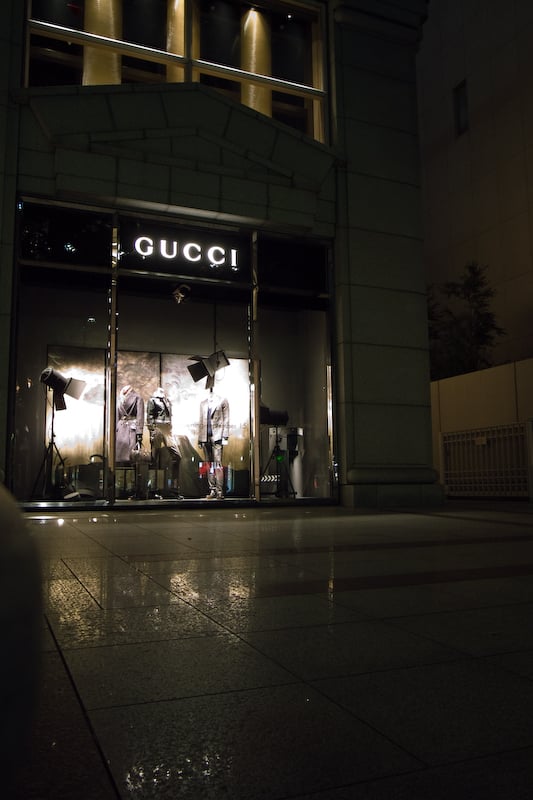
Gucci Store in Buenos Aires, Argentina
A turnaround of the company devised in the late 1980s made Gucci a global contender and a notable fashion label. In October 1995, Gucci went public and had its first initial public offering on the AMEX and NYSE for $22 per share. November 1997 also proved to be a successful year as Gucci acquired a watch license, Severin-Montres, and renamed it Gucci Timepieces.
The firm was named "European Company of the Year 1998" by the European Business Press Federation for its economic and financial performance, strategic vision as well as management quality.
Gucci headquarters are in Florence, other world offices are in Milan, Paris, London, Hong Kong, Japan, and New York. Kering headquarters are in Paris.
In 1989, Maurizio managed to persuade Dawn Mello, whose revival of New York's Bergdorf Goodman in the 1970s made her a star in the retail business, to join the newly formed Gucci Group as Executive Vice President and Creative Director Worldwide. At the helm of Gucci America was Domenico De Sole, a former lawyer who helped oversee Maurizio's takeover of ten 1987 and 1989. The last addition to the creative team, which already included designers from Geoffrey Beene and Calvin Klein, was a young designer named Tom Ford. Raised in Texas and New Mexico, he had been interested in fashion since his early teens but only decided to pursue a career as a designer after dropping out of Parsons School of Design in 1986 as an architecture major. Dawn Mello hired Ford in 1990 at the urging of his partner, writer and editor Richard Buckley.
In the early 1990s, Gucci underwent what is now recognized as the poorest time in the company's history. Maurizio riled distributors, Investcorp shareholders, and executives at Gucci America by drastically reining in on the sales of the Gucci Accessories Collection, which in the United States alone generated $110 million in revenue every year. The company’s new accessories failed to pick up the slack, and for the next three years the company experienced heavy losses and teetered on the edge of bankruptcy. Maurizio was a charming man who passionately loved his family's business, but after four years most of the company's senior managers agreed that he was incapable of running the company. His management had had an adverse effect on the desirability of the brand, product quality, and distribution control. He was forced to sell his shares in the company to Investcorp in August 1993. Dawn Mello returned to her job at Bergdorf Goodman less than a year after Maurizio’s departure, and the position of creative director went to Tom Ford, then just 32 years old. Ford had worked for years under the direction of Maurizio and Mello and wanted to take the company’s image in a new direction. De Sole, who had been elevated to President and Chief Executive Officer of Gucci Group NV, realized that if Gucci were to become a profitable company, it would require a new image, and so he agreed to pursue Ford’s vision.
In 1998, Guinness World Records cited the Gucci "Genius Jeans" as the most expensive pair of jeans in existence. These jeans were distressed, ripped and covered with African beads and were offered for sale for US$3,134 in Milan.[22] (This record was surpassed in June 2005 by Levi Strauss & Co.'s 115-year-old 501 jeans that sold to an anonymous Japanese collector for $60,000.)[23]
In early 1999, the luxury goods conglomerate LVMH, headed by Bernard Arnault, increased its shareholdings in Gucci with a view to a takeover. Domenico De Sole was incensed by the news and declined Arnault's request for a spot on the board of directors, where he would have access to Gucci’s confidential earnings reports, strategy meetings, and design concepts. De Sole reacted by issuing new shares of stock in an effort to dilute the value of Arnault’s holdings. He also approached French holding company Pinault-Printemps-Redoute (PPR) about the possibility of forming a strategic alliance. François Pinault, the company’s founder, agreed to the idea and purchased 37 million shares in the company, or a 40% stake. Arnault’s share was diluted to a paltry 20%, and a legal battle ensued to challenge the legitimacy of the new Gucci-PPR partnership, with the law firm of Skadden, Arps, Slate, Meagher & Flom representing Gucci. Courts in the Netherlands ultimately upheld the PPR deal, as it did not violate that country's business laws. The second largest shareholder is Crédit Lyonnais with 11%. As of September 2001, a settlement agreement was put into place between Gucci Group, LVMH, and PPR.
Following Ford's departure, Gucci Group retained three designers to continue the success of the company's flagship label: John Ray, Alessandra Facchinetti and Frida Giannini, all of whom had worked under Ford's creative direction. Facchinetti was elevated to Creative Director of Women's wear in 2004 and designed for two seasons before leaving the company. Ray served as Creative Director of Menswear for three years. 32-year-old Giannini, who had been responsible for designing men's and women's accessories, served as Creative Director for the entire brand.
In 2006, Frida Giannini, formerly Creative Director of accessories, was named sole Creative Director. In 2009, Patrizio di Marco replaced Mark Lee as CEO of Gucci.
In April 2016, Susan Chokachi was promoted to the role of President and Chief Executive Officer of Gucci America, having previously held the role of Senior Vice President of Marketing and Communications.[25]
Digital marketing
From 2016, Gucci's Internet presence has grown with more people searching for the brand online.[26] In 2017, the brand saw a 115% increase in growth, with over $61,798,514 earned in media value.[27] Furthermore, the fashion house saw a 44.5% increase in revenues in the nine months ending 30th September 2017. This growth can be linked to the success of their digital marketing strategies, which has allowed the brand to integrate the digital world to the in-store experience, and communicate to a larger target audience.[28] Gucci saw a 130% web traffic increase from 1.8M site visits in January 2017 to 4.2M visits in December 2017.[29]
Strategies
E-commerce
Gucci has focused on the online shopping experience, creating a sense of digital inspiration by including visually rich large images and videos, with information on current fashion collections in the editorial section "The Agenda".[30] The company has actively frequently uploaded posts of behind the scenes, with information on the patterns and styles, which highlight the craftsmanship of each product design.[31] This has allowed consumers to gain a stronger emotional relationship with the brand.
Social media
Gucci has a strong digital presence online, and is heavily active across various social media platforms with the brand name: Gucci. These include Facebook, Twitter, Instagram, YouTube, Google+, Pinterest, and Snapchat.[32] In 2017, the brand was seen to be the most-discussed brand on social media within the high-end luxury market.[33] The brand has integrated itself into the modern digital world with campaigns such as the 'collaborative art project'. This campaign was to market a new line of watches, in which the brand collaborated with artists and popular Instagram meme accounts. Memes can be defined as a joke, fad or memorable piece of content that spreads across the web and is usually accompanied by a witty caption. For Gucci, the brand focused on Instagram ads, where they reimagined popular memes with their watch collection, prompting users to share and tag their friends. Despite the conversation and shares, the campaign was not wildly successful, with many viewers reacting negatively to the content.[34]
Collaboration
Gucci has created strong partnerships with Hollywood celebrities and social media influencers, working closely with these individuals to reach more demographics and re-establish its identity as a new, modern brand; despite the fact that it has been around for a while.[35] The brand has changed directions in working with the type of celebrities, with Gucci now dressing contemporary style icons like Rihanna, Blake Lively, Brad Pitt, Rachel McAdams, Harry Styles and Salma Hayek, who can be easily resonated with millennials.[36]
Along with this, Gucci has worked closely with internet stars and has transformed many up and coming Instagram users into luxury-brand stars. These collaborations have been proven to be successful due to the associations with opinion leaders who try to influence the purchasing behaviours of opinion seekers, who are actively searching for information to assist with their purchasing behaviours and decisions.[37] As research has found that consumers make purchases based on what they mean and see items as a sense of their extended self, this form of word-of-mouth marketing can be used to influence the brand's meaning and thus, influence the probability of purchases.[38]
Gucci has also employed symbols from pop culture in their clothing designs. The Spring 2017 collection featured Donald Duck.[39] Other pop culture icons that have been used by Gucci include Bugs Bunny and the Mitford family. Gucci's Summer 2018 collection featured a collaboration with Sega.[40] The Gucci logo adapted Sega's graphic font.[41]
Figurative use
Gucci may be used as an adjective to describe something of a high price or quality, or something that looks beautiful, referencing the brand's high retail costs and fame in the fashion industry, but without any direct suggestion that the item is a Gucci product. The earliest known instance of the word being used in this sense is found in the September 1999 issue of Harper's Bazaar, in which singer Lenny Kravitz describes his bedroom as "very Gucci."[42]
Controversies
In June 2012, Gucci won a trademark lawsuit against Guess with an award of $4.7 million in damages.[43] On 16 October 2013, Gucci won a trademark counterfeiting and cybersquatting lawsuit, in US federal district court in Fort Lauderdale, Florida, against several online businesses.[44] Gucci won permanent injunction, the "immediate surrender to Gucci of 155 domain names used in the counterfeiting operation", and an award of USD $144.2 million, which includes interest.[44]
On 5 November 2013, the UK's Intellectual Property Office issued a ruling that Gucci has lost the rights to its GG trademark in the UK "to a version of the GG logo in four categories, which encompassed garments such as bracelets, shoulder bags, scarves and coats".[45] German clothing firm Gerry Weber applied to revoke "the trademark on account of its 'nonuse' in the periods from 2003 through 2008 and 2007 through 2012".[45] However, "according to Gucci, the ruling does not affect the use of its GG logo in the region" because “Gucci is the owner of several other valid registrations for this mark, including a Community Trade Mark (covering the European Union) for its iconic GG logo and those rights are directly enforceable in the U.K."[45] On 6 November 2013, Gucci won a trademark infringement and unfair competition activities lawsuit against Guess in Nanjing Intermediate People’s Court of the People's Republic of China.[43] Gucci claimed that Guess was " imitating its collections and image."[43] In December 2014, a Gucci subcontractor in Italy told Investigative Journalists that Gucci was aware it irregularly employed Chinese workers who worked as long as 14 hours a day.[46]
Gucci produced controversial advertisements that many believe sexualizes and objectifies women. Erving Goffman conducted research on advertisements and how they are consistently reinforcing common stereotypes of women.[47] He outlined different characteristics commonly found in media that tend to favor men over women. These stereotypes, which can all be found in Gucci’s advertisements, include relative size, ritualization of subordination, feminine touch, and function ranking.[48]
Almost all of Gucci’s advertisements include a woman who is being dismembered to show off a certain part of her body, positioned in a way, that some would consider, sexualizes her body, or made much smaller in size to appear submissive to the counterpart (usually a male) in the ad. Jean Kilbourne describes how often advertisements are working to undermine women and place women in positions of passivity.[48] Many people find these advertisements offensive and in turn many organizations have publicly criticized Gucci. The Fashion Law, a fashion legal and business website, argues that the infamous line “sex sells” is proven through Gucci’s continual use of scandalous advertisements and correlating sales.[49]
In early 2003 Gucci produced a highly popular advertisement which pictured a supermodel with her pants pulled down and her pubic hair shaved into a "G". The Advertising Standards Authority (United Kingdom) received countless complaints from people and organizations, including the director of mediawatchuk demanding the ad be banned due to his belief it was "harmful to society".[50] Many believed that the outcry regarding the ad just fed the idea that Gucci was using sex to successfully sell their products.[49] Although this was a point of contention between Gucci and the Advertising Standards Authority, scholars have shown that Gucci continues to walk the thin line between offensive and acceptable advertisements.
The Italian luxury brand still continues to publish controversial ads. Gucci used a short film and images with reference to a cult film about drug addiction. This advertisement received a lot of backlash primarily because one of their young models was unhealthily thin according to the Advertising Standards Authority.[51] This advertisement sounded shocking to many, but to the advertisement industry it was regarded as a prime example of what companies are supposed to do.[52] William O'Barr argues that advertisements' main priority is to break through and draw the consumer's attention, regardless of what is deemed appropriate in society's eyes.[53]
In February 2019, Gucci advertised a black turtleneck sweater, which included a partial balaclava with red lips, which many twitter users criticized as resembling blackface. The brand quickly addressed the controversy by issuing an apology statement and asserting that the piece was "immediately removed" from its online and physical stores.[54][55] Rapper and actor 50 Cent posted a video on Instagram of himself burning a Gucci t-shirt in response to this incident, captioning the video "I gotta get rid of all the Gucci I have at home. I'm not supporting their brand anymore." [56]
Automobile collaborations

Interior of the AMC Hornet Sportabout with the Gucci package
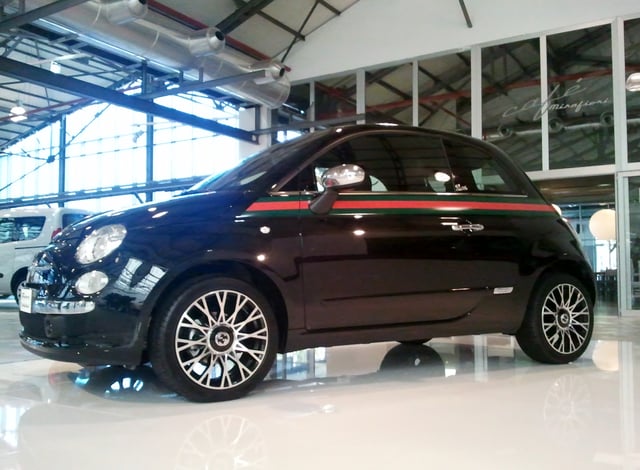
Exterior of the Fiat 500 with the Gucci package
Aldo Gucci expanded into new markets including an agreement with American Motors Corporation (AMC). The automaker merged the worlds of couture and automobiles with the Gucci version of the AMC Hornet.[57] Starting in October 1971,[58] the 1972 and 1973 model year Hornet compact "Sportabout" station wagons became one of the first American cars to offer a special luxury trim package created by a famous fashion designer.[59] Although coming from Italy where sleek sports cars are more revered, Gucci put his special touch efforts on the Hornet station wagon with a rear lift gate and 60.8 cubic feet (1,722 l) of cargo space inside.[60] In contrast to ordinary boxy-looking station wagons, the Sportabout's design featured a low sloping roofline in the rear and tight overall dimensions.[61] The Gucci versions came with the designer's signature red and green trim colors on well-padded beige-upholstered seating and on the interior door panels. The Gucci crest appeared on the inside front door panels and on the front fenders, while the "GG" trademark was on the headliner. Exterior color selections were limited to Snow White, Hunter Green, Grasshopper Green, and Yuca Tan.[62]
The $142 Gucci trim option package was selected on a total of 2,584 Sportabouts produced during 1972 and on 2,251 more during the 1973 model year.[63] Additionally, a Sportabout was commissioned by Gucci for his personal use and to showcase some of his other automotive ideas.[61] The exterior grille featured a Gucci motif, transparent covers over the front lights wrapped around the sides, and the rear trim panel had horizontal red and green stripes on a gray cloth insert.[61] The interior was finished in black leather and a tight-weave Italian fabric incorporating the double-G pattern in black against a light gray background and gray carpeting with black piping. Front bucket seats featured center armrest with vanity case and the dashboard had pullout writing desk with folding lamp, notepad, pen and vanity mirror on a flexible holder.[61] Rear seat passengers had a center fold-down armrest with a set of games in a removable box and the right seat back included a foldout table for snacking or playing with the game set and the left seatback opened to a compartment housing four tumblers and two beverage bottles.[61]
Starting in 1978 and producing a decreasing number each year through the 1984 model year, a Miami-based coachbuilder marketed a Gucci edition of the Cadillac Seville sedan.[63] The exterior included a "facing double G" Gucci logo, an emblem actually featuring Guccio Gucci’s initials,[14] as a hood ornament and the c-pillar covered vinyl roof. The interior had a headliner of the logo and headrests adorned with the logo as well. The dashboard carried the "Gucci script" logo in bold lettering. Inside the trunk was a full set of Gucci luggage.
For 2011, Gucci and Fiat unveiled special versions of the Fiat 500 featuring characteristic stripes inside on the seat belts, seat upholstery, shifter, floor mats, and key fob.[64] The exterior includes green and red stripes below the window line and wrapping around the back as well as 16-inch wheels with Gucci’s interlocking-G logo on the center caps.[65] Available in white with matte-finish chrome trim or in black with glossy chrome accents, the small car includes leather trim and other designs "to make it feel like a Gucci handbag."[66] The hatchbacks were joined by the 500C by Gucci featuring a sliding cloth roof with a green-red-green Gucci stripe.[67] The Gucci versions of both the regular 500 and the cloth-top 500C were again available in 2013.[68]
Partnerships
Gucci has had a partnership with UNICEF since 2005.[69] Gucci stores worldwide donate a percentage of the sales for special collections made specifically for UNICEF to go toward the United Nations Children's Fund. The annual Gucci Campaign to Benefit UNICEF supports education, healthcare, protection and clean water programs for orphans and children affected by HIV/AIDS in sub-Saharan Africa. For the campaign in 2009, Michael Roberts promoted a children's book, "Snowman in Africa" with proceeds going to UNICEF. In five years, Gucci donated over $7 million to UNICEF. Gucci is the largest corporate donor to UNICEF's "Schools for Africa" that was established in 2004 by UNICEF, the Nelson Mandela Foundation, and the Hamburg Society. Its goal is to increase access to basic schooling for all, with a special emphasis on children orphaned by HIV/AIDS and children living in extreme poverty.
Chime for Change
Launched in February 2013, the "Chime for Change" campaign[70] works to further the global campaign for girls' and women's empowerment. Gucci has funded over 210 projects in 81 countries through this initiative.
In 2013, it was announced that Beyoncé Knowles would work with Salma Hayek and Frida Giannini on the campaign that aims to spread female empowerment. The campaign, which aired on February 28, was set to new music by Knowles.[71] A concert for the cause took place on June 1, 2013 in London[72] and included other acts like Ellie Goulding, Laura Pausini, Florence and the Machine, Iggy Azalea and Rita Ora.[73] The concert raised over $130,000.
In July 2013, activist Lydia Emily was commissioned to paint a mural on Skid Row, Los Angeles of a woman named Jessica, who is a survivor of human trafficking. She currently works for the Mary Magdalene Project—an organization which has been helping women leave the sex industry since 1980.[74]
Gucci Museo
Gucci opened a 1,715-square-metre (18,460 sq ft) museum charting its 90-year history; Gucci Museo is located in Florence, within the Palazzo della Mercanzia and overlooking the Piazza della Signoria.[75]
See also
List of Italian companies
Made in Italy